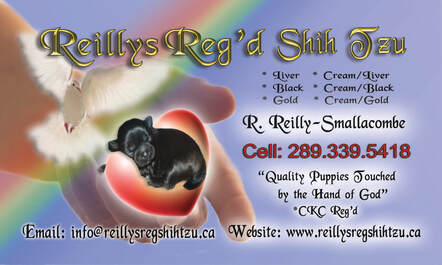|
I could write you a whole section on do's and don'ts but I have chosen to do video links from McCann's Professional Dog Trainers in the Hamilton area. I have had many excellent reports from new puppy owners that have attended their classes in the years I have been breeding. I will be adding several videos throughout the blog of their tips and tricks. So sit back and enjoy what they have to say. You will never regret it!
0 Comments
There’s lots of puppy stuff you’ll need to make your puppy comfortable, happy, and successful as he learns to adapt to his new environment.
|
|||||||

 RSS Feed
RSS Feed